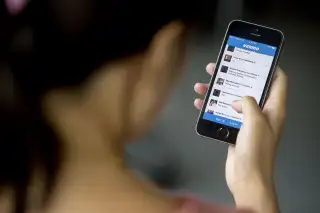The Scary Thing You Don't Understand About Venmo

Millennials love Venmo, and for good reason. The PayPal-owned app provides a frictionless way for friends to pay one another without ever touching cash. And if one of your pals "forgets" to pay what he owes, you don't have to resort to the awkward (and old-fashioned) step of asking for the money—the app's "request" button will do the job for you.
Those conveniences enabled Venmo to mediate some $2.4 billion worth of transactions last year. But they also come at a price: The service has taken heat for lacking security, consumer protections, and customer service. The company recently responded by adding two-factor authentication. But as of September 2015, a customer service phone number is still nowhere to be found on its "contact us" page, and the service remains ripe for fraud because of a very common misunderstanding about how the it works.
Namely, many people seem to think Venmo cash transfers happen instantly. They don't.
This is crucial because people are increasingly using Venmo not only to split dinner checks and rent bills with friends, but also to transact business with strangers—who sometimes take advantage of this misunderstanding to perpetrate fraud.
The most common scam works like this: Say you're selling something on Craigslist and agree to accept payment via Venmo. You get the standard text message alert from Venmo saying the agreed upon amount has been added to your balance, so you hand off the goods. When you attempt to transfer your Venmo balance to your bank account, however, the money never shows up. If you follow up with Venmo—and only if you follow up, because Venmo currently won't automatically notify you—you find that the scammer cancelled the transaction.
Wait, what? It turns out that the money was never transferred in the first place. When you got the notification that "Donald has paid you $100 for skis," you figured the funds were secure in your account—or at least that Venmo had taken custody of them on your behalf. In fact, a notification of payment from Venmo merely indicates that a certain amount of money has been scheduled to be transferred the next business day. Which means scammers had time to cancel the transfer.
Think of it this way: We all know that when someone hands you a paper check, they can "cancel" the check and the bank won't release the funds, right? It's basically the same thing.
If you read Venmo's terms of service—something that we all know we should do but often don't—you'll find a paragraph in the security section that reads, "Avoid payments to people you don't know, especially if it involves a sale for goods and services." This potentially scam-preventing information is buried, however—and even if it were front and center, people might still misuse the platform.
A partial solution would be for Venmo to change the "Donald has paid you..." notification to something like "Donald has scheduled a payment for the next business day."
Meanwhile, when doing business with a stranger, stick to cash, a bank or cashier's check, or a service like PayPal, which has a mechanism for preventing this kind of fraud. Or use Venmo and simply wait until your bank confirms that the funds really landed in your account.